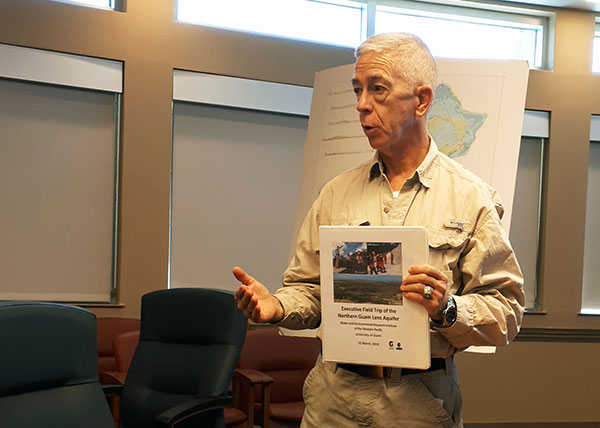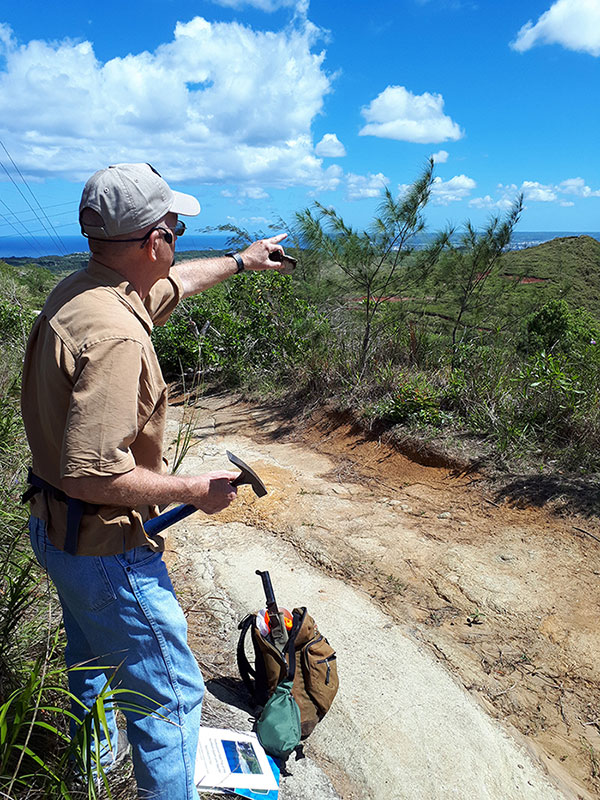USGS study: Guam freshwater seen to ebb by 2080

John W. Jenson, director of the University of Guam’s Water & Environmental Research Institute, provides background on Guam’s aquifer for a group of local officials during a tour offered by WERI in March 2019. (UNIVERSITY OF GUAM)
If current climate conditions persist, Guam’s water resources are projected to diminish by 2080 due to an increase in average temperature and decrease in average rainfall.
This was the prediction that came out of a federally funded U.S. Geological Survey study published on Sept. 30 that evaluates water resources on the island’s U.S. Department of Defense installations to determine how climate change and sea-level rise will affect freshwater availability.
The University of Guam, through the research of John W. Jenson, director of UOG’s Water and Environmental Research Institute of the Western Pacific and professor of hydrogeology, was a key contributor of the report along with U.S. Geological Survey’s Pacific Islands Water Science Center, the University of Hawai`i, The University of Texas, and the East-West Center.
The study examines Guam’s main freshwater resources—the Northern Guam Lens Aquifer and the Fena Valley Reservoir—and their sources of intake, from streams to groundwater. Using Guam’s climate history and future climate conditions informed by global climate models, the study noted several key projections for the future period of 2080–2099:
• Increased average temperature on Guam of 5.8°F
• Decreased overall rainfall of 7%
• Decreased streamflow of 18% in some areas of Southern Guam
• Reduced groundwater recharge of the Northern Guam Lens Aquifer by 19%
• Decreased water availability from Fena Valley Reservoir but no water-level decrease at up to twice the 2018 demand rates
The study also recommends proactive strategies to mitigate the impacts, including lowering the water-supply intake elevation of Fena Valley Reservoir and increasing the height of the reservoir’s spillway to increase its storage capacity.
The study used downscaled climate models that were funded by the UOG Pacific Islands Climate Adaptation Science Center, which also partially funded the report contributions made by Jenson and another co-author.
The study was initiated and funded primarily through the Strategic Environmental Research and Development Program of the U.S. Department of Defense.
The complete report and datasets detailing the projections and recommended courses of action can be found at https://pubs.er.usgs.gov/publication/sir20195095. (UOG)

John W. Jenson, director of the University of Guam’s Water & Environmental Research Institute, points north from Mount Alutom to the Northern Guam Lens Aquifer during an executive tour offered by WERI in March 2018. (UNIVERSITY OF GUAM)



























